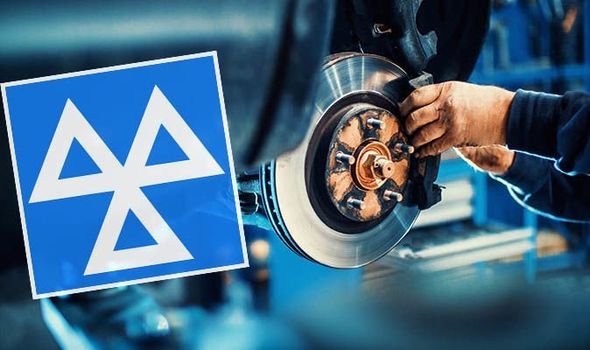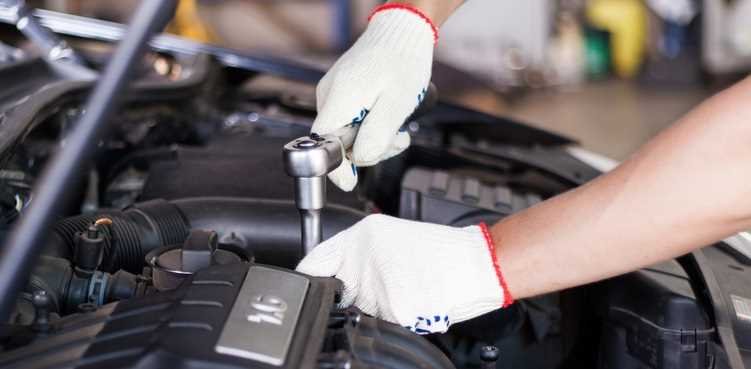Every year, millions of vehicles in the UK undergo MOT testing — a vital process that keeps our roads safe and vehicles compliant with national safety standards. But what exactly happens during an MOT test? And how does it ensure that your car, van, or motorcycle is safe to drive?
Vehicle testing is an essential part of keeping the UK’s roads safe. The MOT testing process checks whether your car meets legal safety and environmental standards. In this guide, we’ll explain how vehicle testing ensures vehicle safety, why it’s required, and what you can do to prepare for your MOT.
In this detailed guide, we’ll break down vehicle testing, explain why it’s important, and show how MOT testing helps maintain road safety and performance.
1. What Is Vehicle Testing?
Vehicle testing refers to the inspection and evaluation of a vehicle to ensure it meets safety, performance, and environmental standards. In the UK, this testing is legally required once a car reaches three years of age.
The MOT test (Ministry of Transport test) is the UK’s official form of vehicle testing. It’s conducted by approved garages and mechanics to verify that vehicles are safe, roadworthy, and meet emissions standards.
2. Why MOT Testing Is Important for Every Driver
MOT testing isn’t just a legal requirement — it’s a crucial safety measure. The test ensures that every vehicle on UK roads meets minimum standards for safety and environmental performance.
Key reasons why MOT testing is essential:
-
Prevents accidents caused by mechanical failures.
-
Keeps emissions within legal limits.
-
Detects wear and tear before it leads to costly breakdowns.
-
Ensures vehicles comply with DVSA (Driver and Vehicle Standards Agency) laws.
-
Protects both drivers and pedestrians from unsafe vehicles.
3. What Happens During an MOT Test?
During MOT testing, a certified inspector conducts a detailed examination of your vehicle. This isn’t a repair session—it’s a safety check designed to confirm that your car is fit for the road.
The test usually takes between 45–60 minutes and covers key components such as:
a. Vehicle Identification and Registration
Your vehicle identification number (VIN) and registration plates are checked for accuracy and clarity.
b. Lights and Signals
Headlights, indicators, brake lights, and hazard lights must all function correctly and be properly aligned.
c. Steering and Suspension
The steering mechanism and suspension system are tested for control, stability, and wear.
d. Brakes
Brakes are checked for performance, balance, and condition using specialist testing equipment.
e. Tyres and Wheels
Tyres are inspected for correct tread depth (minimum 1.6mm), wear, and damage.
f. Seatbelts and Seats
All seatbelts must lock and retract correctly. Seats should be securely fixed and adjustable.
g. Windscreen and Wipers
The windscreen must be free from major cracks or damage that affects visibility. Wipers should function properly.
h. Exhaust and Emissions
The exhaust system is checked for leaks, and emissions are measured to ensure compliance with environmental laws.
i. Horn and Mirrors
These must be in full working order to guarantee safe driving visibility and awareness.
4. How MOT Testing Promotes Vehicle Safety
MOT testing is one of the most effective ways to ensure that vehicles on the road are safe for both drivers and the public.
Here’s how it contributes to road safety:
a. Early Fault Detection
The test helps detect small issues before they develop into major safety risks.
b. Prevents Road Accidents
Faulty brakes, worn tyres, or malfunctioning lights can cause serious accidents. The MOT test ensures these are always in good condition.
c. Protects the Environment
MOT testing reduces harmful emissions, helping maintain air quality and supporting UK environmental goals.
d. Ensures Compliance
Driving without a valid MOT certificate is illegal and can lead to fines of up to £1,000. Regular testing ensures you stay compliant with UK law.
5. Common Reasons Vehicles Fail MOT Testing
While MOT testing is straightforward, many vehicles fail due to simple, avoidable issues. Knowing these in advance can save you money and frustration.
Here are the top causes of MOT failures:
-
Faulty or blown bulbs
-
Worn-out tyres
-
Brake imbalance or low performance
-
Damaged wipers or poor windscreen visibility
-
Suspension faults
-
Exhaust leaks
-
Missing or unreadable registration plates
👉 Tip: Regular car servicing can help you fix these issues before your MOT test and increase your chances of passing the first time.
6. How to Prepare for Your MOT Test
To make sure your vehicle passes the MOT on the first try, follow these steps:
Step 1: Check Lights and Indicators
Ensure all lights work correctly. Replace any bulbs that have blown.
Step 2: Inspect Tyres
Check tread depth (at least 1.6mm) and look for damage or bulges.
Step 3: Clean Your Vehicle
A clean car makes it easier for inspectors to do their job — plus, they may refuse a test if your car is too dirty underneath.
Step 4: Test the Horn and Wipers
These small checks often cause failures but are easy to fix.
Step 5: Check Fluids
Top up your oil, coolant, and washer fluids.
Step 6: Secure Mirrors and Seats
Make sure all mirrors are intact and seats are stable.
Following these checks ensures your car is MOT-ready and saves you time and money.
7. The Link Between MOT Testing and Regular Servicing
Although MOT testing ensures roadworthiness, it’s not the same as servicing.
-
MOT Test: Legally checks safety and emissions.
-
Service: Maintains your car’s overall performance and longevity.
Combining both ensures your car stays safe, efficient, and less likely to fail future tests. Many garages offer MOT and service packages to help you save money while maintaining your car’s condition.
8. What Happens If You Fail Your MOT Test?
If your vehicle fails its MOT, the garage will provide a VT30 certificate listing the reasons for failure.
You can:
-
Repair the faults and book a free retest within 10 working days, or
-
Choose another MOT centre (though you may pay again).
Driving a car that has failed its MOT is illegal unless it’s being driven to a repair centre or a pre-booked MOT test.
9. Benefits of Regular Vehicle Testing
Getting your vehicle tested regularly—beyond the legal MOT requirement—offers several advantages:
-
Long-term cost savings from preventive maintenance
-
Better fuel efficiency
-
Higher resale value due to maintenance history
-
Peace of mind knowing your vehicle is safe and compliant
Regular vehicle testing is a smart way to maintain both your car’s value and your safety.
10. How to Find an Approved MOT Testing Centre
You should always book your MOT with a DVSA-approved MOT centre.
To find one near you:
-
Visit the official GOV.UK MOT test centre finder.
-
Enter your postcode.
-
Choose a verified centre with good reviews.
Approved centres display a blue DVSA sign with three white triangles—this means they are authorised to perform MOT testing.
11. The Future of Vehicle Testing in the UK
The UK government continues to modernise MOT testing with digital systems, emissions tracking, and advanced safety standards.
Future updates may include:
-
Real-time emission testing
-
Integration with vehicle telematics
-
Digital MOT certificates accessible online
These improvements aim to make vehicle testing faster, more transparent, and environmentally friendly.
12. Vehicle Testing for Electric and Hybrid Cars
As electric and hybrid vehicles grow in popularity, MOT testing is adapting to new technology.
EVs skip emissions checks but undergo detailed inspections for:
-
Battery safety
-
Electrical components
-
Regenerative braking systems
-
Tyres and suspension (due to heavier weight)
Hybrid vehicles must meet both electric and petrol/diesel standards.
Regular testing ensures these new-generation vehicles remain safe and efficient.
13. Consequences of Skipping MOT Testing
Driving without a valid MOT test certificate can result in:
-
Fines up to £1,000
-
Invalid insurance coverage
-
Points on your licence
-
Vehicle impoundment
Even worse, driving an unsafe vehicle puts your life—and others—at risk. Always renew your MOT on time to avoid legal and financial trouble.
14. How MOT Testing Benefits the Environment
Vehicle testing doesn’t just protect drivers — it also helps protect the planet.
MOT emissions tests identify vehicles producing excessive CO₂, hydrocarbons, and nitrogen oxides. Fixing these problems reduces pollution and keeps the air cleaner for everyone.
15. Vehicle Testing Keeps Roads Safe
Vehicle testing is more than a legal obligation—it’s a commitment to safety, performance, and environmental responsibility.
Through the MOT system, the UK ensures that every car, van, and motorcycle on the road meets strict safety standards. By maintaining your vehicle and booking regular MOT tests, you’re protecting yourself, your passengers, and every other road user.
When it’s time for your next MOT, book early, prepare your car, and drive with confidence knowing your vehicle is safe and compliant.
Car Inspection Service: How Pre-MOT Vehicle Checks Save You Money
Car MOT Service: How to Combine Your Service and MOT for Better Value
MOT Garage Near Me: Choosing the Best MOT Centre for Your Car



